Coptotermes (termites)
Identity
- Preferred Scientific Name
- Coptotermes
- Preferred Common Name
- termites
- EPPO code
- COPTSP (Coptotermes sp.)
Pictures
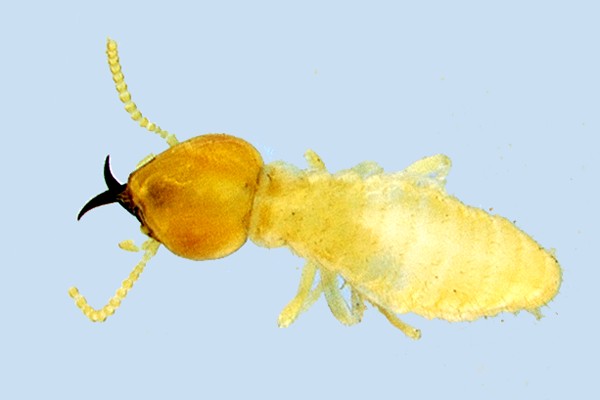
Adult
Coptotermes formosanus (Formosan subterranean termite); adult.
©Georg Goergen/IITA Insect Museum, Cotonou, Benin
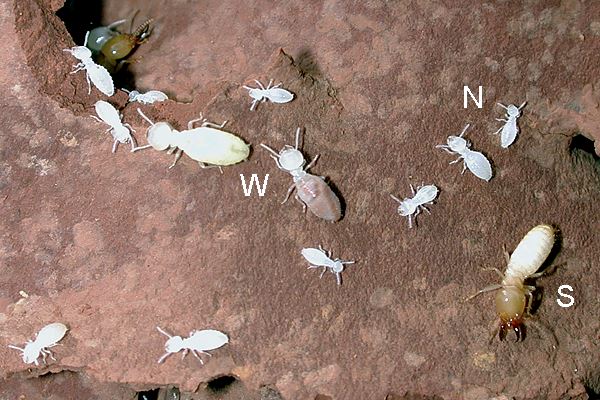
Castes
Coptotermes curvignathus (rubber termite); soldiers (S), workers (W) and nymphs (N).
©Laurence G. Kirton
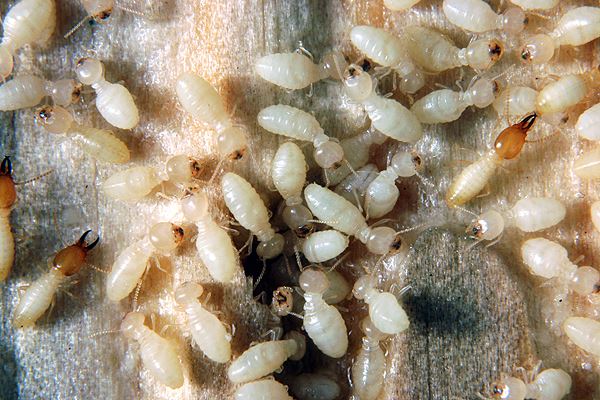
Colony
Coptotermes formosanus (Formosan subterranean termite); the white, soft-bodied, workers are the most commonly seen caste in a C. formosanus colony and, are responsible for food acquisition and maintenance of nest galleries. Soldiers have an orange-brown, oval-shaped, head with curved mandibles and are responsible for defending the colony against invaders, such as ants.
©Nan-Yao Su
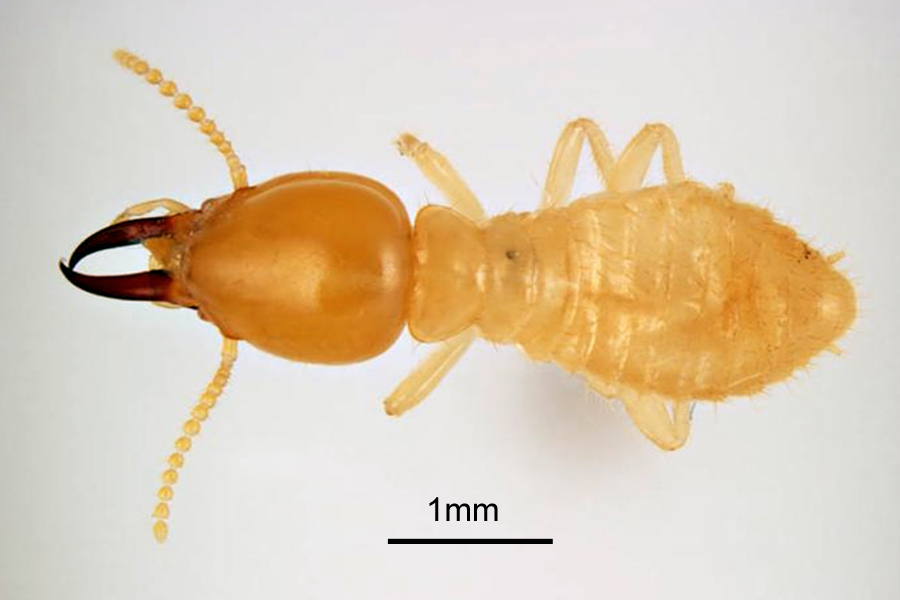
Soldier
Coptotermes gestroi (Asian subterranean termite); soldier, dorsal view. Note scale.
©PaDIL/Simon Hinkley & Ken Walker/Museum Victoria - CC BY 3.0 AU
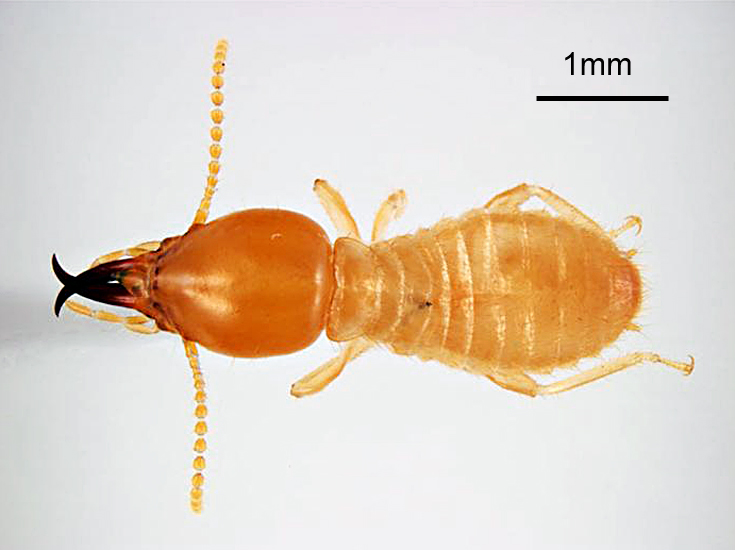
Soldier
Coptotermes formosanus (Formosan subterranean termite); soldier, dorsal view. Honolulu, Hawaii, USA. May, 1995.
©PaDIL/Simon Hinkley & Ken Walker/Museum Victoria - CC BY 3.0 AU
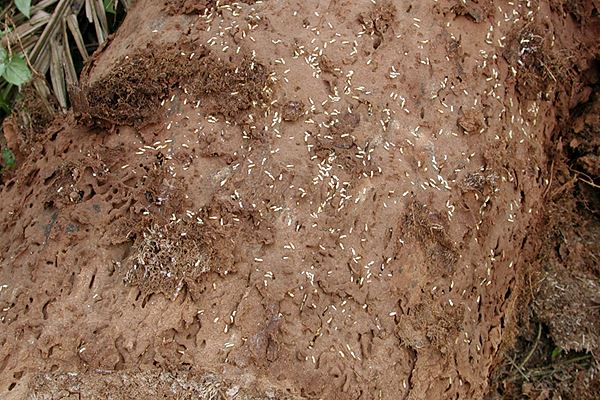
Felled tree attacked by termites
Coptotermes curvignathus (rubber termite); habit - attack on the trunk of a large tree (felled). The soil covering the trunk has been removed showing the termites and holes penetrating into the living tissue of the tree.
©Laurence G. Kirton
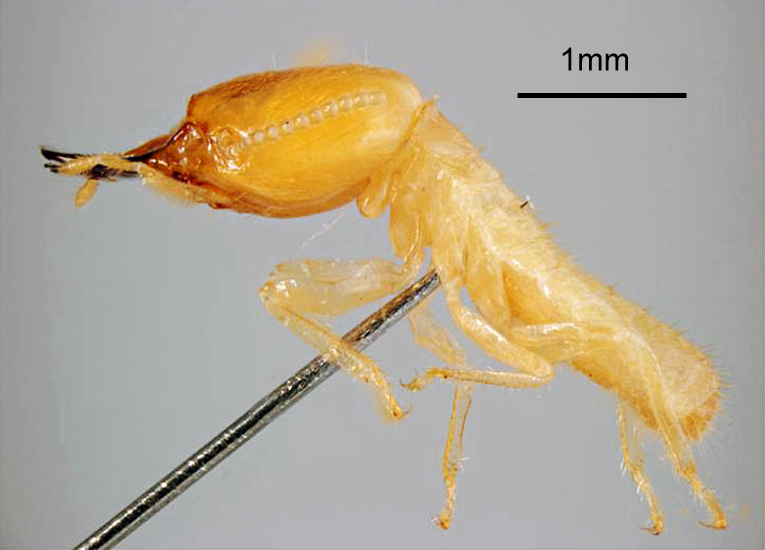
Soldier
Coptotermes formosanus (Formosan subterranean termite); soldier, lateral view. Honolulu, Hawaii, USA. May, 1995.
©PaDIL/Simon Hinkley & Ken Walker/Museum Victoria - CC BY 3.0 AU
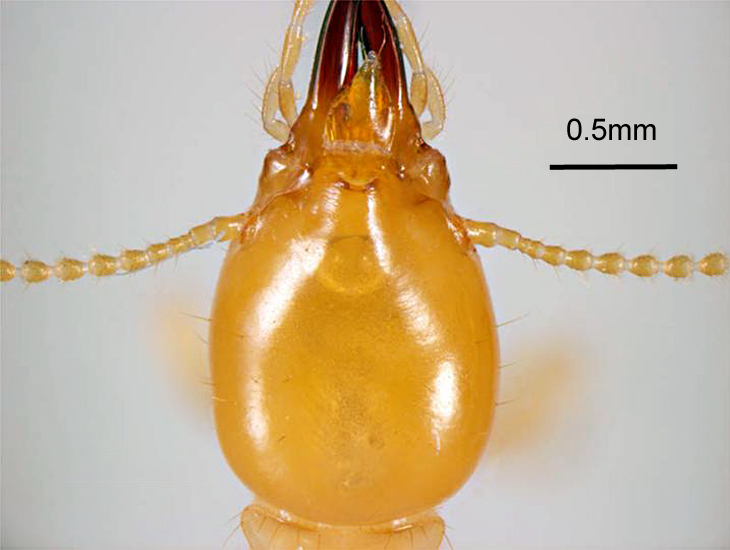
Head
Coptotermes formosanus (Formosan subterranean termite); head of soldier, dorsal view. Honolulu, Hawaii, USA. May, 1995.
©PaDIL/Simon Hinkley & Ken Walker/Museum Victoria - CC BY 3.0 AU
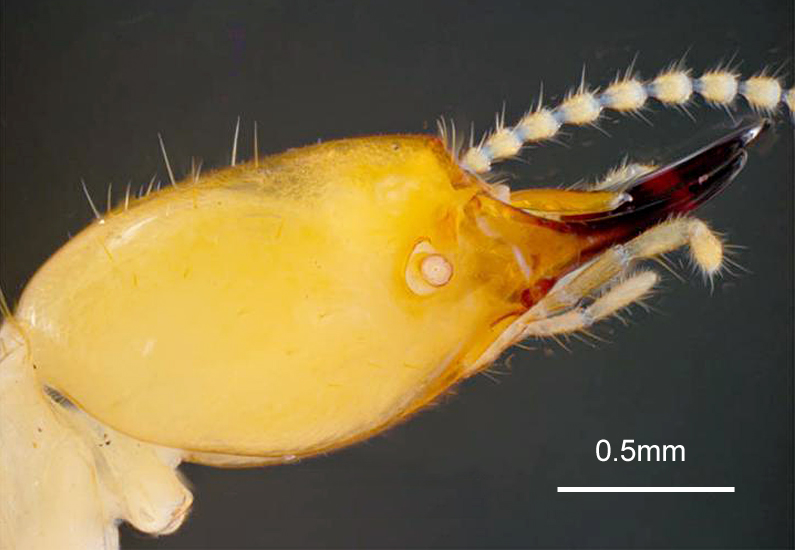
Head
Coptotermes formosanus (Formosan subterranean termite); head of soldier, lateral view. Honolulu, Hawaii, USA. May, 1995.
©PaDIL/Simon Hinkley & Ken Walker/Museum Victoria - CC BY 3.0 AU
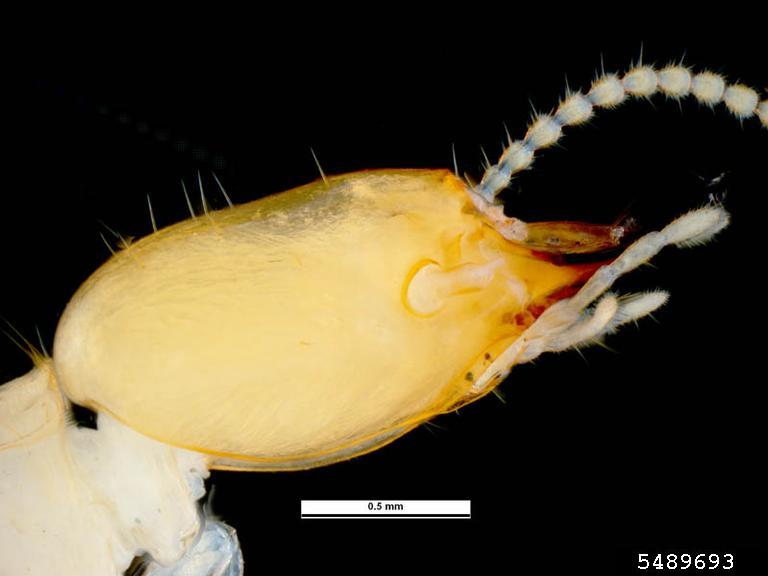
Soldier head
Coptotermes gestroi (Asian subterranean termite); Soldier head. January 2013.
©Pest and Diseases Image Library, Bugwood.org - CC BY-NC 3.0
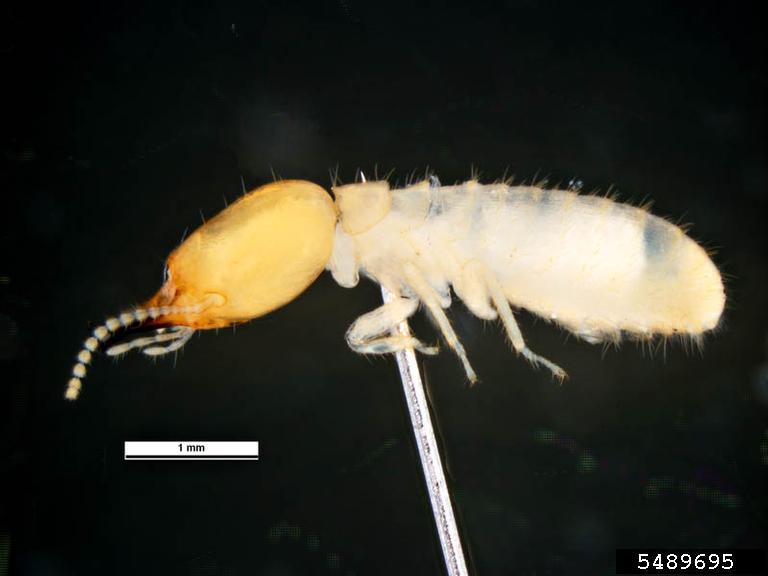
Soldier
Coptotermes gestroi (Asian subterranean termite); Soldier, lateral view. January 2013.
©Pest and Diseases Image Library, Bugwood.org - CC BY-NC 3.0

Coptotermes
Termite damage
Eric Boa
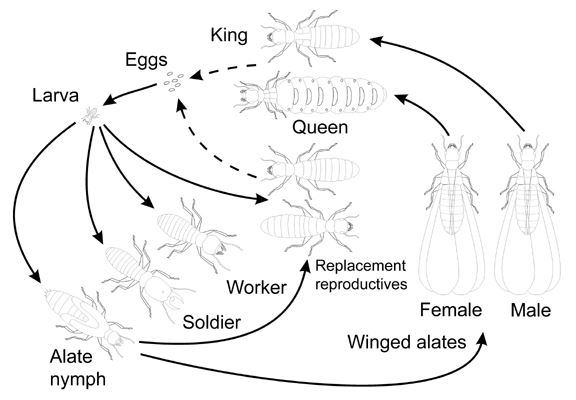
Life history
Coptotermes formosanus (Formosan subterranean termite); life history.
©Nan-Yao Su
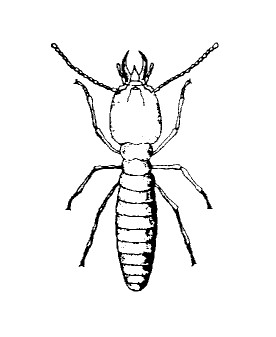
Adult - line drawing
C. formosanus - adult worker.
IRRI
Distribution
Host Plants and Other Plants Affected
Symptoms
Damage by Coptotermes most frequently occurs in mature trees, although it can occur at earlier stages of growth. Coptotermes usually invade trees via the soil and bore into the tree through the roots. Sometimes the attack is secondary, after the tree has been damaged by fire or fungal infection (Cowie et al., 1989). Once a tree is infested, Coptotermes often hollow out or 'pipe' the heartwood of the trunk; although in most cases this may not be fatal to the tree, it does greatly reduce the value of the timber (Chan, 1983; Harris, 1971; Greaves et al., 1967). The most severely damaged trees can be so weakened that they are prone to be blown over by strong winds (Dhanarajan, 1969).Attack can be above ground or at ground level. A common place for termite damage to trees is about 23 cm below ground at the fork of the tap root. On contact with a root, termites tunnel through it and eat into cambium and sapwood and then into the stem. In dry conditions they may be attracted by plant sap for moisture. Trees are easily blown down where roots have been destroyed. On oil palm and coconut, termites can feed just under the bark or under leaf bases. Large cavities can be also eaten out of trees.
List of Symptoms/Signs
| Symptom or sign | Life stages | Sign or diagnosis |
|---|---|---|
| Plants/Roots/internal feeding | ||
| Plants/Stems/internal feeding |
Prevention and Control
Control
Introduction
A good, up-to-date summary of insecticides used for termite control is given by Wiseman and Eggleton (1994), while Logan et al. (1990) provide a thorough review of non-chemical methods of control.
It has been suggested by Cowie et al. (1989) that there are only two effective and economically viable methods of controlling Coptotermes in the forestry industry. The first is by insecticide injection into nests within affected trunks (for details see Greaves et al., 1967; Hadlington, 1987). However, this method requires a skilled labour force to ensure proper insecticide application. The second method has been tested in Papua New Guinea, where most Coptotermes nests are located in stumps or logs. This technique involves a combination of nest destruction with explosives prior to the establishment of the plantation, followed by the destruction of queens in subsequently located nests in order to reduce reinfestation (Gray and Butcher, 1969).
Introduction
A good, up-to-date summary of insecticides used for termite control is given by Wiseman and Eggleton (1994), while Logan et al. (1990) provide a thorough review of non-chemical methods of control.
It has been suggested by Cowie et al. (1989) that there are only two effective and economically viable methods of controlling Coptotermes in the forestry industry. The first is by insecticide injection into nests within affected trunks (for details see Greaves et al., 1967; Hadlington, 1987). However, this method requires a skilled labour force to ensure proper insecticide application. The second method has been tested in Papua New Guinea, where most Coptotermes nests are located in stumps or logs. This technique involves a combination of nest destruction with explosives prior to the establishment of the plantation, followed by the destruction of queens in subsequently located nests in order to reduce reinfestation (Gray and Butcher, 1969).
Chemical Control
Due to the variable regulations around (de-)registration of pesticides, we are for the moment not including any specific chemical control recommendations. For further information, we recommend you visit the following resources:
•
EU pesticides database (http://ec.europa.eu/food/plant/pesticides/eu-pesticides-database/)
•
PAN pesticide database (www.pesticideinfo.org)
•
Your national pesticide guide
Impact
The greatest losses to the value of timber usually occur in plantation forestry systems where fast-growing exotic tree species are planted. It is these exotic species which prove to be most vulnerable to severe termite attack. Generally, indigenous trees in natural forests are rarely badly damaged by termite attack, presumably because they have evolved defence mechanisms against indigenous termite species (Harris, 1955; Lee and Wood, 1971). There are some exceptions to this rule, the most relevant being the attack by Coptotermes acinaciformis and C. frenchi on Eucalyptus trees in Australia, which are responsible for up to 92% of the pre-harvest damage to trees in virgin forest, and 64% in younger managed forests (Greaves et al., 1967). In both natural and managed forests, it is usually those trees which are stressed (for example by water deficit, fire damage, or attack by other pests) that are most susceptible to attack from termites.An overview of the impact of termites on the forestry industry, and methods of control in the Indo-Malaysian and African regions, is provided by Cowie et al. (1989). The most serious damage to mature forestry trees is from Coptotermes, especially in South-East Asia and Australia. The economic importance of Coptotermes in Peninsular Malaysia has been reviewed by Tho and Kirton (1990). In some exotic plantations of Araucaria and Pinus in Malaysia, up to 100% of trees can be attacked by Coptotermes species (especially C. elisae) and can become a major limitation to re-afforestation schemes (Dhanarajan, 1969; Tho, 1974). In urban areas and rural settlements, Coptotermes are the main cause of damage to wood-based building materials in Malaysia (Kirton, 1995).Under natural conditions in the Malaysian rain forest Coptotermes may be rare. On clearing trees, other species of termite are killed and waste vegetation becomes an ideal food for Coptotermes. Newly planted crop or tree seedlings are not attacked until this food supply runs out. Termite attack can often reduce the value of timber not only by the direct effect of the termites themselves, but also by allowing the entry of other pests and pathogens.Although Coptotermes mainly attack trees, they sometimes damage crops as well. For example, C. formosanus has been reported as damaging groundnuts and other food crops in China and Japan (Sands, 1973). Seasonal changes in foraging groups can affect the amount of damage that occurs. Attacks on healthy young rubber trees in Malaysia by C. curvignathus can occur within 3-4 weeks.On some trees (e.g. oil palm) termites can feed just under the bark or under leaf bases, as in coconut. Large cavities can be also eaten out of trees. In Indonesia, C. curvignathus enters wounds and damage tends to be greater in older plantations. In Malaysia, Coptotermes spp. are more abundant in outlying habitats, paticularly Avicinia mangrove swamps. These places act as reservoirs for re-infestation (Salik and Tho, 1984).
Information & Authors
Information
Published In
Copyright
Copyright © CABI. CABI is a registered EU trademark. This article is published under a Attribution-NonCommercial-NoDerivatives 4.0 International (CC BY-NC-ND 4.0)
History
Published online: 16 November 2021
Language
English
Authors
Metrics & Citations
Metrics
SCITE_
Citations
Export citation
Select the format you want to export the citations of this publication.
EXPORT CITATIONSExport Citation
View Options
View options
Get Access
Login Options
Check if you access through your login credentials or your institution to get full access on this article.


